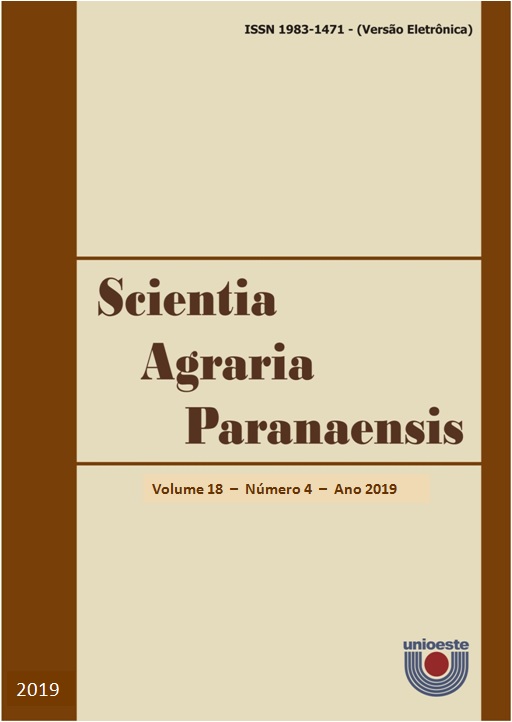Biomass and phosphorus content in giant bamboo cuttings influenced by phosphate fertilization
DOI:
https://doi.org/10.18188/sap.v18i4.22666Resumo
Dendrocalamus asper, known as giant bamboo or bamboo-bucket, has been used as a substitute for wood and fiber, due mainly to its wide availability, rapid growth rate, short cycle and traditional use as construction material. In general, its cultivation is carried out on phosphorus-deficient soils, using vegetative propagation, mainly from cuttings. Thus, the aim of this study was to evaluate the effect of fertilization with phosphorus doses on the biomass allocation in roots, leaves and stems and on the level and content of P in leaves and roots of bamboo cuttings. The experiment was conducted in a greenhouse, using soil with low P content (2.4 mg dm-3). The treatments consisted of six doses of phosphorus (0, 20, 40, 80, 160 e 320 kg ha-1 of P2O5). The experimental design was a randomized block design, with five replications. After 90 days, the seedlings were collected and evaluated the following variables: dry mass of roots, leaves, stems and total dry mass, level and P content in leaves and roots. Phosphate fertilization promoted greater development of the cuttings and resulted in higher content of P. In general, the species D. asper responds positively to phosphate fertilization.
Downloads
Publicado
Como Citar
Edição
Seção
Licença
Aviso de Direito Autoral Creative Commons
Política para Periódicos de Acesso Livre
Autores que publicam nesta revista concordam com os seguintes termos:
1. Autores mantém os direitos autorais e concedem à revista o direito de primeira publicação, com o trabalho simultaneamente licenciado sob a Licença Creative Commons Attribution que permite o compartilhamento do trabalho com reconhecimento da autoria e publicação inicial nesta revista.2. Autores têm autorização para assumir contratos adicionais separadamente, para distribuição não-exclusiva da versão do trabalho publicada nesta revista (ex.: publicar em repositório institucional ou como capítulo de livro), com reconhecimento de autoria e publicação inicial nesta revista.
3. Autores têm permissão e são estimulados a publicar e distribuir seu trabalho online (ex.: em repositórios institucionais ou na sua página pessoal) a qualquer ponto antes ou durante o processo editorial, já que isso pode gerar alterações produtivas, bem como aumentar o impacto e a citação do trabalho publicado (Veja O Efeito do Acesso Livre).
Licença Creative Commons
Esta obra está licenciada com uma Licença Creative Commons Atribuição-NãoComercial-CompartilhaIgual 4.0 Internacional, o que permite compartilhar, copiar, distribuir, exibir, reproduzir, a totalidade ou partes desde que não tenha objetivo comercial e sejam citados os autores e a fonte.


